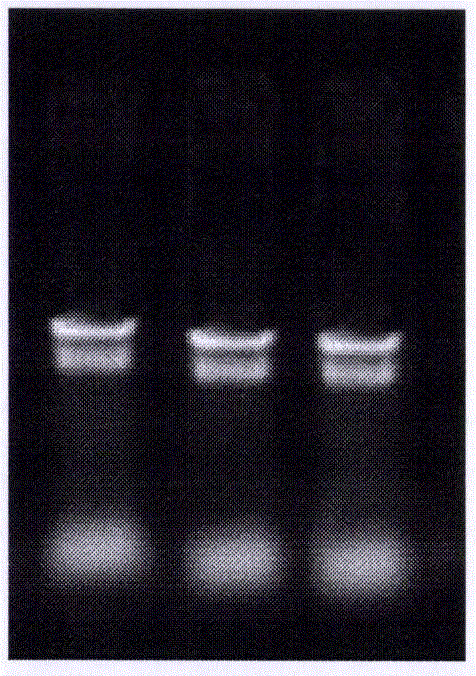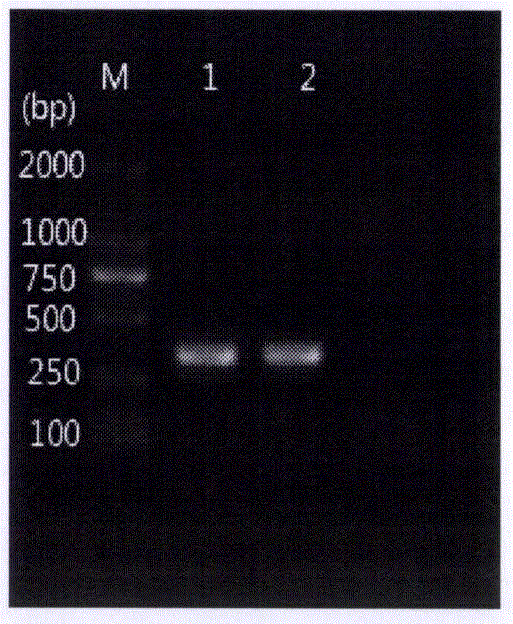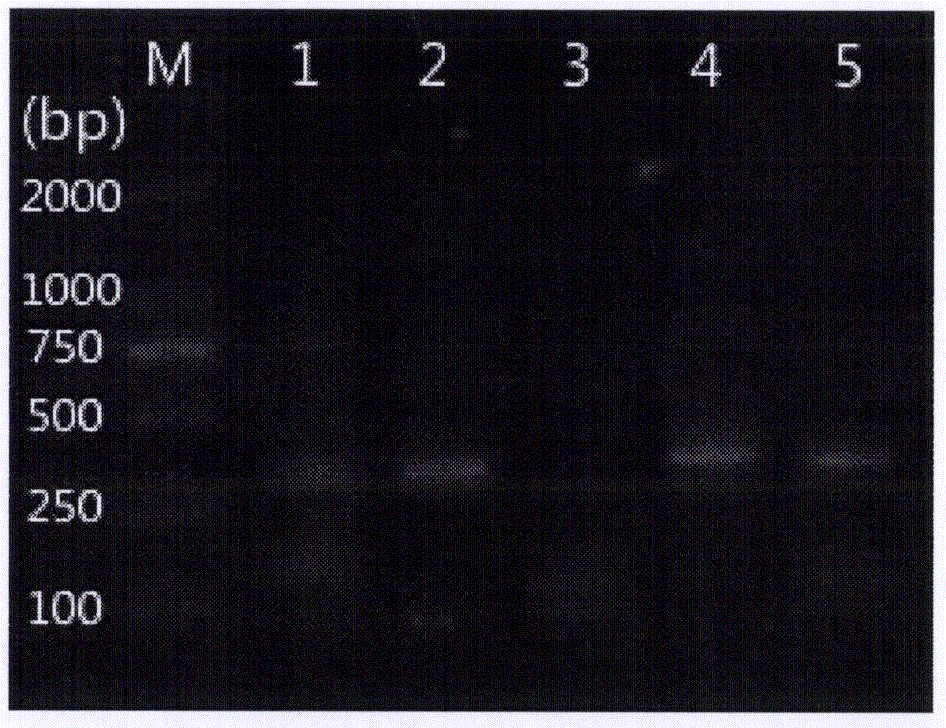Gene cloning method, expressing method and application of psychrophilic yeast metallothionein
A technology of metallothionein and cloning method, applied in the field of gene cloning of psychrophilic yeast metallothionein, can solve the problem of no polar yeast, and achieve the effect of strong binding ability of heavy metals and broad prospects
- Summary
- Abstract
- Description
- Claims
- Application Information
AI Technical Summary
Problems solved by technology
Method used
Image
Examples
Embodiment 1
[0036] Example 1: Cloning of a metallothionein gene of psychrophilic yeast
[0037] (1) Extraction of psychrotrophic yeast genome RNA:
[0038] ①Inoculate the activated RhodotorμLa mucilaginosa AN5 strain into a 250mL Erlenmeyer flask containing 100mL YEPD liquid medium, while adding 8mM CuSO 4 , Induction. Incubate at 10°C at 120 rpm for 3 days. Centrifuge at 8000 rpm to obtain bacterial cells.
[0039] ② Wash the bacteria collected by centrifugation with 5 times the volume of distilled water, shake the pellet and mix well, then centrifuge at 4°C and 8000rpm for 8min, discard the supernatant; repeat once.
[0040] ③Add anhydrous alcohol to the mortar to fully burn and eliminate the RNase that may exist in the mortar.
[0041] ④Put the cells obtained by centrifugation into a mortar pre-cooled with liquid nitrogen and grind them thoroughly.
[0042] ⑤Add 50-100mg of the grinded bacteria into a 1.5mL RNase-free centrifuge tube with 1mL Buffer Rlysis-F, and mix well.
[0043] ⑥ Add 200μL o...
Embodiment 2
[0065] Example 2: Expression and purification of a psychrophilic yeast metallothionein
[0066] (1) Induced expression of metallothionein gene
[0067] ① Pick a single colony containing an empty expression vector (positive control plasmid) and a recombinant expression vector, respectively, and inoculate them in a 250mL Erlenmeyer flask containing 50mL LB liquid medium containing kanamycin, and cultivate overnight at 37°C;
[0068] ②Take 5mL of the overnight bacterial solution in a 500mL Erlenmeyer flask containing 250mL LB liquid medium (containing kanamycin), and shake culture to OD at 200r / min. 600 The value is about 0.6;
[0069] ③Add 100mM IPTG to the final concentration of 0.1mM in the induction flask, culture in a shaker at 37℃ to induce expression for 2h;
[0070] ④ Take the well-growing recombinant strain and the empty expression vector bacteria solution at 4℃, 12000r / min, and centrifuge for 15min. The centrifuged cells were added to silica and 6 mL of pre-cooled 50 mM phosphat...
Embodiment 3
[0073] Example 3: Test and analysis of the resistance of the recombinant protein to metal ions
[0074] The Escherichia coli BL21 transferred into the recombinant plasmid was inoculated into LB liquid medium containing kanamycin and cultivated, OD 680 When it is 0.42, add Cu with a final concentration of 1mM 2+ , Continue to culture for 2 days, and detect the OD of the bacteria 680 , The results are as attached Figure 5 As shown, cK: control, that is, bacteria without metallothionein gene transfer; mt-BL21: bacteria with metallothionein gene transfer. The growth rate of Escherichia coli transfected with metallothionein gene in the medium containing copper ions was significantly higher than that of the control, and it had higher resistance to heavy copper ions.
[0075] The novel metallothionein cloned in the present invention contains 16 cysteines, and the abundant sulfhydryl groups can chelate a variety of heavy metal ions. It is stronger than the heavy metal binding capacity of ...
PUM
| Property | Measurement | Unit |
|---|---|---|
| molecular weight | aaaaa | aaaaa |
| molecular weight | aaaaa | aaaaa |
Abstract
Description
Claims
Application Information
 Login to View More
Login to View More - R&D
- Intellectual Property
- Life Sciences
- Materials
- Tech Scout
- Unparalleled Data Quality
- Higher Quality Content
- 60% Fewer Hallucinations
Browse by: Latest US Patents, China's latest patents, Technical Efficacy Thesaurus, Application Domain, Technology Topic, Popular Technical Reports.
© 2025 PatSnap. All rights reserved.Legal|Privacy policy|Modern Slavery Act Transparency Statement|Sitemap|About US| Contact US: help@patsnap.com



